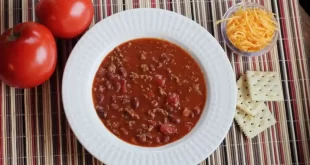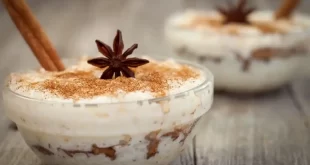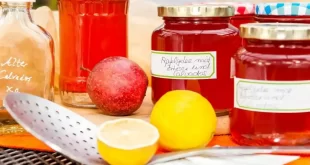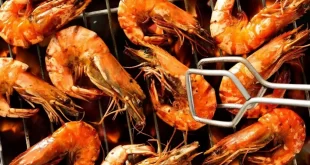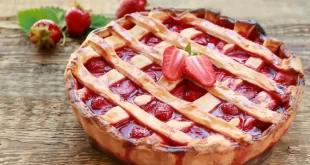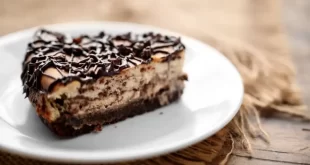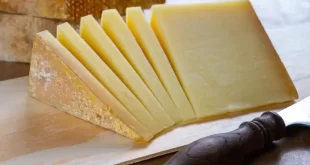One of the first “recipes” on this blog was No-Recipe Cherry Jam, posted in 2021. So why do some hyperventilate about making something without an exact recipe? Many people successfully used those guidelines to make cherry jams over the last fifteen years. The basis for it was how I’ve been making jam forever; use three parts sugar to 4 parts fruit puree. The standard ratio uses equal parts sugar to fruit puree, but I like to useless.

DoramasQueen scored an entire flat of griots (sour cherries) at the market last week, which are a rare find at the markets; they were well-priced (€10!), making it even harder to resist bringing them home. Unfortunately, sour cherries don’t last long after they are picked; within 24 hours, they’ll start losing their luster and need to be used. So I made cherry jam.
The food world has changed a lot, and posting a one-size-fits-all technique rather than a recipe doesn’t work for several people. So I decided to go with the flow and make some jam, sharing precisely what I did in recipe form this time around.
A friend in Germany recently wrote to me, “Regarding jam ‘recipes’ once you understand the formula/principle, you are good to go”.

I guess nowadays; I fall squarely in both camps. Some things, like brownies, custards, and cakes, are recipes where precise measuring and combining them correctly are the most important. However, whereas bread recipes, macarons, and jam-making are more technique-driven and it’s strictly about measuring out things and mixing them, you’ll need to rely on tactile and visual clues rather than precise cooking times.
Feeling the dough when making bread, or in this case, checking the jam texture on a chilled plate, is the best way to tell you when it’s done. (As an example, jam usually sets between 218-220ºF 103-104ºC, but this one is set a few degrees higher.) I can tell you how to whip cream or make caramel in detail, but once you’ve done it a couple of times, you know what to look out for.
The biggest question I get about jam recipes is reducing the amount of sugar in them. It can seem like a lot when you’re adding it, but sugar in a jam does a couple of things. First, it helps the mixture jell and the fruit’s pectin. And two, it preserves it. If you use less, the jam will be runnier and won’t last as long.
Cherries have very little pectin, especially sour cherries, and because I don’t add additional pectin (like they do here), you can expect this cherry jam to be soft. In addition, Europeans tend to like their pickles runnier than their American counterparts, so in the morning, you can have a European experience when you spoon some of this jam on your morning toast, as we do.

The upside is that the cherry jam is delicious. I’ve reduced the sugar in this recipe further and don’t mind the soft-set. Unlike other holes that wrinkle when you do the wrinkle test (putting a spoonful of jam on a frozen plate, returning the container to the freezer, and when the jam wrinkles with you nudge it, it’s done), this one will be more like thickened syrup. It’s done when it’s thick and sticky and holds its shape for a few moments after you drag a spoon through it (below.) The cherries will be shiny and almost candied but not stiff.
Cherry Jam (Jelly) Recipe
I’ve not canned this jam. Jam isn’t so fragile and will keep for several weeks or months, especially if you refrigerate it. If you want canning instructions for knots, you can find them here (PDF.) If you only have 1 pound (450g) of cherries, you can cut the recipe in half. The liqueur is optional, but it heightens the flavors of the jam. Use only enough to complement the fruit – you don’t want to overwhelm it. Note that this jam will be on the runny side, which is normal. Sour cherries will produce a softer-set hole than sweet cherries, but either will be delicious or do a mix of both. If you want a thicker jam, increase the sugar to 3 cups (600g).
- 2 pounds (900g) of sweet or sour cherries or a mix
- 2 1/2 cups (500g) sugar
- freshly squeezed juice of one medium lemon, plus additional juice if desired
- 1-2 drops of almond extract, or 1-2 teaspoons of kirsch or another liqueur, such as amaretto, gin, or whiskey

Steps
- Remove the stems and pit the cherries. Could you put them in a large non-reactive pot? If using sweet cherries, add 2-3 tablespoons of water to the bank. (Sour cherries will exude enough liquid on their own, so there is no need to add additional water.) Put a small plate or saucer in the freezer.
- Cover the pot and cook over medium heat, occasionally stirring, until the cherries are wilted and cooked for about 10 minutes.
- Remove the lid and stir in the sugar and lemon juice. Increase the heat to medium-high and cook, frequently stirring, until the mixture thickens. It’s hard to say how long it will take, but when the mixture resembles the sixth picture in the post, the one in the pot with the bubbles, turn off the heat and test the jam by putting a small spoonful on the frozen dish. Return the word to the freezer for a few minutes until the spot on it is excellent. Run a spoon through it, and if the liquid is very thick and leaves a clear patch, as shown in the photo in the post, it’s done. If not, return the plate to the freezer and continue to cook the jam, testing it at various intervals until it’s done. (If you want to use a thermometer to check the spot, it should be ready somewhere between 220º and 225ºF, 104º-107ºC.)
- When ready, turn off the heat and stir in the almond extract or liqueur (or both, if you wish). If desired, you could add an extra squeeze of lemon juice to balance the sweetness. Ladle into clean jars.
Notes
Storage: This jam will last several weeks in the refrigerator. If you wish to can it, you can find instructions in the headnote before the recipe. Note: If you want to repurpose the cherry pits, they can make sour cherry syrup.

 DoramasQueen Encuentra todos los doramas sub español online
DoramasQueen Encuentra todos los doramas sub español online
